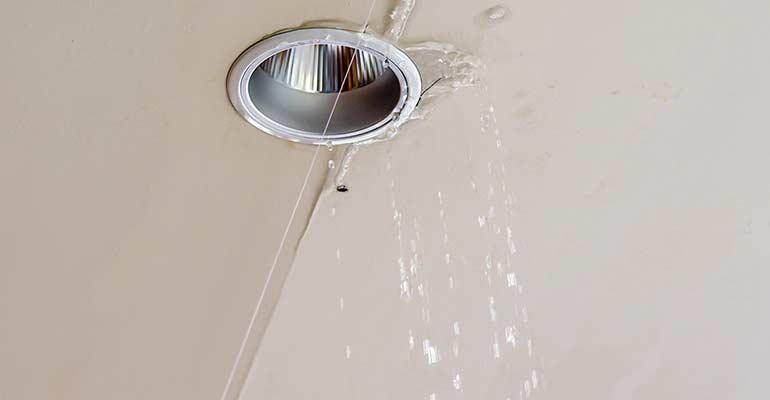Discover the Key Factors Contributing To Water Leak Issues in Your Home
Discover the Key Factors Contributing To Water Leak Issues in Your Home
Blog Article
What're your opinions with regards to Common Water Leaks In House?

Leakages not only trigger waste of water however can also cause unneeded damages to your home and advertise undesirable organic development. However, water leakages may go undetected considering that a lot of the pipework in our house is hidden. By recognizing as well as looking for day-to-day situations that trigger leakages, you can secure your residence from future leaks as well as unneeded damage. Today, we will consider six leak triggers that might be causing your pipes to leak.
Encroaching roots
Many water leakages start outside the residence rather than inside it. You might discover damp spots or sinkholes in your backyard, and that might imply that tree roots are getting into water lines triggering water to seep out.
Corroded water supply
As time passes by, your plumbing system ages and also deterioration such as corrosion might begin gnawing the pipes. This might be the reason for discoloration or warping on your water pipes. This calls for an assessment with your plumber immediately. Take into consideration changing the pipes since they are at a greater danger of rust than the more recent models if our plumbing system is old.
Faulty Pipeline Joints
The factor at which your pipes attach is frequently the weakest web link in the waterline. Pipeline joints can deteriorate over time, leading to water leakages. The bulk of pipeline joints are not easily noticeable. If you have noisy pipelines that make ticking or banging noises, especially when the warm water is activated, your pipeline joints are probably under a lot of stress. It is suggested to have your plumber examine your system once a year.
Instant temperature adjustments.
Extreme temperature level modifications in our pipes can create them to broaden as well as acquire unexpectedly. This growth and tightening may create fractures in the pipes, particularly if the temperature level are below freezing. It would be best if you kept an eye on how your plumbing functions. The presence of the previously stated situations regularly suggests a high threat.
Poor Water Connectors
At times, a leakage can be brought on by loosened hose pipes and pipes that provide your appliances. Usually, changing is what triggers the loose water Connections. You could locate in the case of a cleaning machine, a hose pipe might spring a leakage due to shaking throughout the spin cycle. In case of a water links leak, you might observe water running directly from the supply line or pools around your home appliances.
Clogged Drains
Obstructed drains may be annoying and also inconveniencing, yet they can often end up causing an overflow leading to rupture pipes. Maintain removing any products that might drop your drains that can block them to avoid such inconveniences.
All the above are root causes of leaks yet not all water leakages result from plumbing leakages; some leaks might come from roofing system leaks. All leaks should be fixed immediately to avoid water damages.
Leakages not only cause waste of water yet can additionally trigger unnecessary damages to your house and advertise undesirable organic development. By looking and also comprehending for everyday scenarios that cause leakages, you can shield your home from future leakages and unneeded damage. Today, we will look at 6 leak creates that may be triggering your pipelines to leak.
At times, a leakage can be triggered by loosened tubes and also pipelines that provide your devices. In instance of a water links leakage, you may observe water running directly from the supply line or puddles around your appliances.
How To Check For Water Leak In Your Home
How To Check for Leaks
The average household's leaks can account for nearly 10,000 gallons of water wasted every year and ten percent of homes have leaks that waste 90 gallons or more per day. Common types of leaks found in the home are worn toilet flappers, dripping faucets, and other leaking valves. These types of leaks are often easy to fix, requiring only a few tools and hardware that can pay for themselves in water savings. Fixing easily corrected household water leaks can save homeowners about 10 percent on their water bills.
To check for leaks in your home, you first need to determine whether you're wasting water and then identify the source of the leak. Here are some tips for finding leaks:
Take a look at your water usage during a colder month, such as January or February. If a family of four exceeds 12,000 gallons per month, there are serious leaks.
Check your water meter before and after a two-hour period when no water is being used. If the meter changes at all, you probably have a leak.
Identify toilet leaks by placing a drop of food coloring in the toilet tank. If any color shows up in the bowl after 10 minutes, you have a leak. (Be sure to flush immediately after the experiment to avoid staining the tank.)
Examine faucet gaskets and pipe fittings for any water on the outside of the pipe to check for surface leaks.
Undetected water leaks can happen without the home or business owner even realizing. If you suspect a water leak, but not able to find the source. It is time to contact a professional water leak detection service, The Leak Doctor.
How To Find a Water Leak In Your Home
https://www.leakdoctor.com/blog/How-To-Check-For-Water-Leak-In-Your-Home_AE197.html

Hopefully you enjoyed reading our section about Most Common Causes of Leaky Pipes. Thank you for spending some time to read through our blog post. Are you aware of anybody else who is fascinated about the niche? Feel free to share it. Thanks a bunch for your time. Visit us again soon.
Trust our expertise. Report this page